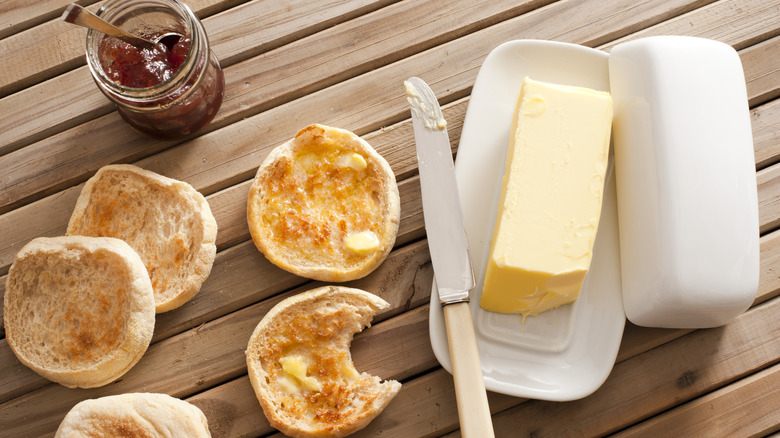Why Your Butter Looks Dark Around The Edges
We may receive a commission on purchases made from links.
When you hear the term 'brown butter' you probably think of amazing chocolate chip cookies, but if you see dark or browned edges on normal, uncooked butter that's not a good thing. Discoloration in butter is one of the telltale signs of spoilage, so you shouldn't eat any butter that isn't the usual pale yellow color. The concept of 'off butter' might sound odd since this stuff can last up to four months when stored properly. This long shelf life means it often gets finished way before it goes bad. However, it can happen.
Luckily, it's easy to spot, so no need to wonder if you've accidentally eaten off butter before. Discoloration (often brownish in color and always darker than the normal yellow) is a strong visual cue that butter has gone bad. The edges are the first areas to turn, so that's what you should keep an eye on.
Sourness is the second big giveaway — if you get close, rancid butter will smell sour and unpleasant. This should be enough to confirm your suspicions, but if you're still unsure, you can give it a small taste to check if it's sour. Mold can also grow on butter. If you see this, you should definitely throw it out.
How to store butter properly
The three main dangers to butter are air exposure, UV light, and moisture loss. If you buy a stick of butter wrapped in parchment, open it up, and leave it on the kitchen counter; your butter will not last as long as it should.
This isn't always a problem, however. For butter-heavy households that get through a stick in a couple of days (cooking buttery recipes like these), you can probably carry on as you are. But if you want to keep it fresh for longer, there are a few changes you should make.
The most important change is storing butter in a tub. This protects it from light, air, and moisture loss all at once which will help it last much longer than when it's out in the open. If you really want to stretch the life of butter, the fridge is the best place to keep it. However, we all know how inconvenient that is when you want to butter a slice of bread. While keeping butter at room temperature can lead to a worse texture, it's generally okay to do it as long as you keep an eye out for signs of spoilage and accept that it won't last as long.

